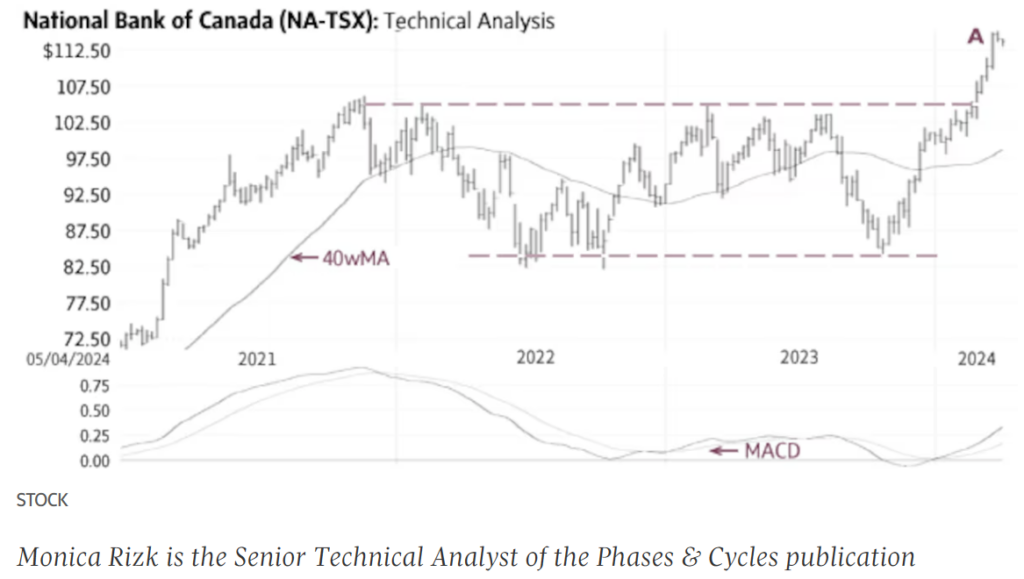Monday April 22
Euro zone consumer confidence
(8:30 a.m. ET) Canada’s industrial product and raw materials price indexes for March. Estimates are month-over-month increases of 1.0 per cent and 3.0 per cent, respectively.
(8:30 a.m. ET) Canada’s new housing price index for March. Estimate is flat month-over-month and down 0.2 per cent year-over-year.
(8:30 a.m. ET) U.S. Chicago Fed National Activity Index for March.
(10:30 a.m. ET) Bank of Canada’s market participants survey for Q1.
Earnings include: Nucor Corp.; PrairieSky Royalty Ltd.; Verizon Communications Inc.; Winpak Ltd.
—
Tuesday April 23
Japan and Euro zone PMI
MORE STORIES BELOW ADVERTISEMENT

(9:45 a.m. ET) U.S. S&P Global PMIs for April.
(10 a.m. ET) U.S. new home sales for March. The Street is projecting an annualized rate rise of 1.2 per cent.
(10 a.m. ET) U.S. Richmond Fed Manufacturing Index for April.
Earnings include: Alphabet Inc.; Canadian National Railway Co.; First Quantum Minerals Ltd.; General Electric Co.; Lockheed Martin Corp.; PepsiCo Inc.; Tesla Inc.; Texas Instruments Inc.; United Parcel Service Inc.; Visa Inc.; West Fraser Timber Co. Ltd.
—
Wednesday April 24
(8:30 a.m. ET) Canadian retail sales for February. The Street is projecting an increase of 0.1 per cent from January.
(8:30 a.m. ET) Canadian manufacturing sales for March.
(8:30 a.m. ET) U.S. durable and core orders for March. Consensus is month-over-month increases of 2.9 per cent and 0.2 per cent, respectively.
(1:30 a.m. ET) Bank of Canada’s summary of deliberations for April 10 decision
Earnings include: Aecon Group Inc.; Alamos Gold Inc.; AT&T Inc.; Boeing Co.; Celestica Inc.; Choice Properties REIT; FirstService Corp.; IBM; MAG Silver Corp.; Meta Platforms Inc.; Methanex Corp.; Metro Inc.; Rogers Communications Inc.; Waste Connections Inc.; Waste Management Inc.; Whitecap Resources Inc.
—
Thursday April 25
Bank of Japan outlook report and monetary policy meeting (through Friday)
ECB economic bulletin release
Germany consumer confidence
(8:30 a.m. ET) Canada’s payroll survey and job vacancy rate for February.
(8:30 a.m. ET) U.S. initial jobless claims for week of April 20. Estimate is 215,000, up 3,000 from the previous week.
(8:30 a.m. ET) U.S. real GDP and GDP price index for Q1. Consensus is annualized rate increases of 2.5 per cent and 3.0 per cent, respectively.
(8:30 a.m. ET) U.S. goods trade deficit for March.
(8:30 a.m. ET) U.S. wholesale and retail inventories for March.
(10 a.m. ET) U.S. pending home sales for March. The Street expects a month-over-month increases of 1.0 per cent.
Earnings include: Agnico Eagle Mines Ltd.; Amazon; Bombardier Inc.; Caterpillar Inc.; Comcast Corp.; Eldorado Gold Corp.; Intel Corp.; Merck & Co.; Microsoft Corp.; Newmont Goldcorp Corp.; Secure Energy Services Inc.; Teck Resources Ltd.; TFI International Inc.; T-Mobile US Inc.; Vermilion Energy Inc.
—
Friday April 26
Japan CPI
(8:30 a.m. ET) Canadian wholesale trade for March.
(8:30 a.m. ET) U.S. personal spending and income for March. The consensus projections are increases of 0.6 per cent and 0.5 per cent, respectively, from February.
(8:30 a.m. ET) U.S. core PCE price index for March. The Street expects a rise of 0.3 per cent from February and 2.7 per cent year-over-year.
(10 a.m. ET) U.S. University of Michigan consumer sentiment for April.
Also: Ottawa’s budget balance for February.
Earnings include: AbbVie Inc.; Chevron Corp.; Exxon Mobil Corp.; Imperial Oil Ltd.

